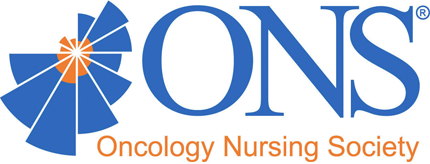Purpose/Objectives: To examine beliefs and Pap test utilization among Chinese American women, the largest Asian female population in the United States.
Research Approach: Cross-sectional descriptive, correlational study.
Setting: Metropolitan areas of Portland, OR.
Participants: 100 foreign-born Chinese women aged 40 years and older.
Methodologic Approach: Three questionnaires were modified, translated, combined, and pretested. Participants completed the self-administered questionnaire in a group setting.
Main Research Variables: Utilization of Pap test screening, health beliefs, and cultural and sociodemographic variables.
Findings: Sixty-eight percent reported having a Pap test within the prior three years (adherence), and 84% reported ever having a Pap test. The odds of Pap test use and adherence decreased with increasing age. Women with insurance or a regular healthcare provider had better odds of Pap test use and adherence. Older age, older age when a participant moved to the United States, and increased modesty were negatively associated with ever having had a Pap test.
Conclusions: Age and cultural beliefs influence Pap test use and adherence. The strength of provider recommendation and healthcare access as predictors suggest areas for interventions designed to increase screening for cervical cancer.
Interpretation: Nurses play a vital role in preventive health care, especially with the growing number of advanced practice nurses delivering primary care. Primary healthcare providers should be reminded of their influential role in increasing adherence to cancer screening. Further health policy action is necessary to extend screening coverage to those who do not have adequate health insurance.
References
Champion, V. (1999). Revised susceptibility, benefits, and barriers scale for mammography screening. Research in Nursing and Health 22 341-348.
Do, H.H., Taylor, V.M., Yasui, Y., Jackson, J.C., & Tu, S. (2001). Cervical cancer screening among Chinese immigrants in Seattle, Washington. Journal of Immigrant Health, 3, 15-21.
Gupta, N.E. (2006). What you should know about the HPV vaccine. Clinical Advisor, July, 46-48.
Hiatt, R., Pasick, R., Perez-Stable, E., McPhee, S., Englestock, L., & Lee, M. (1996). Pathways to early cancer detection in the multiethnic population of the San Francisco Bay area. Health Education Quarterly, 23(Suppl.), S10-S27.
Janz, N.K., Champion, V.L., & Strecher, V.J. (2002). The Health Belief Model. In K. Glanz, B.K. Rimer, & F.M. Lewis (Eds.), Health behavior and health education (3rd ed., pp. 45-66). San Francisco: John Wiley and Sons.
Kagawa-Singer, M., & Pourat, N. (2000). Asian American and Pacific Islander breast and cervical carcinoma screening rates and Healthy People 2000 objectives. Cancer, 89, 696-705.
Lee, M., Lee, F., & Stewart, S. (1996). Pathways to early breast and cervical detection for Chinese American women. Health Education Quarterly, 23(Suppl.), S76-S88.
Lee, M.M., Lee, F., Stewart, S., & McPhee, S. (1999). Cancer screening practices among primary care physicians serving Chinese Americans in San Francisco. Western Journal of Medicine, 170, 148-155.
Lee-Lin, F., & Menon, U. (2005). Breast and cervical cancer screening practices and interventions among Chinese, Japanese, and Vietnamese Americans. Oncology Nursing Forum, 32, 995-1003.
McPhee, S.J., Bird, J.A., Ha, N.T., Jenkins, C.N., Fordham, D., & Le, B. (1996). Pathways to early cancer detection for Vietnamese women: Health is gold. Health Education Quarterly, 23(Suppl.), S60-S75.
Nguyen, B.H., Nguyen, K.P., McPhee, S.J., Nguyen, A.T., Tran, D.Q., & Jenkins, C.N. (2000). Promoting cancer prevention activities among Vietnamese physicians in California. Journal of Cancer Education, 15(2), 82-85.
Oregon State Cancer Registry. (2002). Cancer in Oregon. Portland, OR: Author.
Pett, M.A. (1997). Nonparametric statistics for health care research. Thousand Oaks, CA: Sage.
Schoua-Glusberg, A. (1992). Report on the translation of the questionnaire for the National Treatment Improvement Evaluation Study. Chicago: National Opinion Research Center.
Schoua-Glusberg, A. (2004). Translating research instruments: Committee approach and focus groups. Research Support Services, 2004, 1-2.
Schulmeister, L., & Lifsey, D.S. (1999). Cervical cancer screening knowledge, behaviors, and beliefs of Vietnamese women. Oncology Nursing Forum, 26, 879-887.
Tabachnick, B.C., & Fidell, L.S. (2001). Using multivariate statistics (4th ed.). Needham Heights, MA: Pearson.
Tang, T.S., Solomon, L.J., & McCracken, L.M. (2000). Cultural barriers to mammography, clinical breast exam, and breast self-exam among Chinese-American women 60 and older. Preventive Medicine, 31, 575-583.
Tang, T.S., Solomon, L.J., Yeh, C.J., & Worden, J.K. (1999). The role of cultural variables in breast self-examination and cervical cancer screening behavior in young Asian women living in the United States. Journal of Behavioral Medicine, 22, 419-436.
Taylor, V.M., Jackson, J.C., Tu, S.P., Yasui, Y., Schwartz, S.M., Kuniyuki, A., et al. (2002). Cervical cancer screening among Chinese Americans. Cancer Detection and Prevention, 26, 139-145.
Tiffen, J., & Mahon, S.M. (2006). Cervical cancer: What should we tell women about screening? Clinical Journal of Oncology Nursing, 10, 527-531.
U.S. Census Bureau. (2004a). An overview of a proposed Census Bureau guideline for the translation of data collection instruments and supporting materials. Washington, DC: U.S. Census Bureau, U.S. Department of Commerce.
Yi, J.K. (1994). Breast cancer screening practices by Vietnamese women. Journal of Women's Health, 3, 205-213.
Yu, E.S., Kim, K.K., Chen, E.H., & Brintnall, R.A. (2001). Breast and cervical cancer screening among Chinese American women. Cancer Practice, 9(2), 81-91.
Yu, M., Seetoo, A.D., Tsai, C., & Sun, C. (1998). Sociodemographic predictors of Papanicolaou test and mammography use among women of Chinese descent in southeastern Michigan. Women's Health Issues, 8, 372-381.

